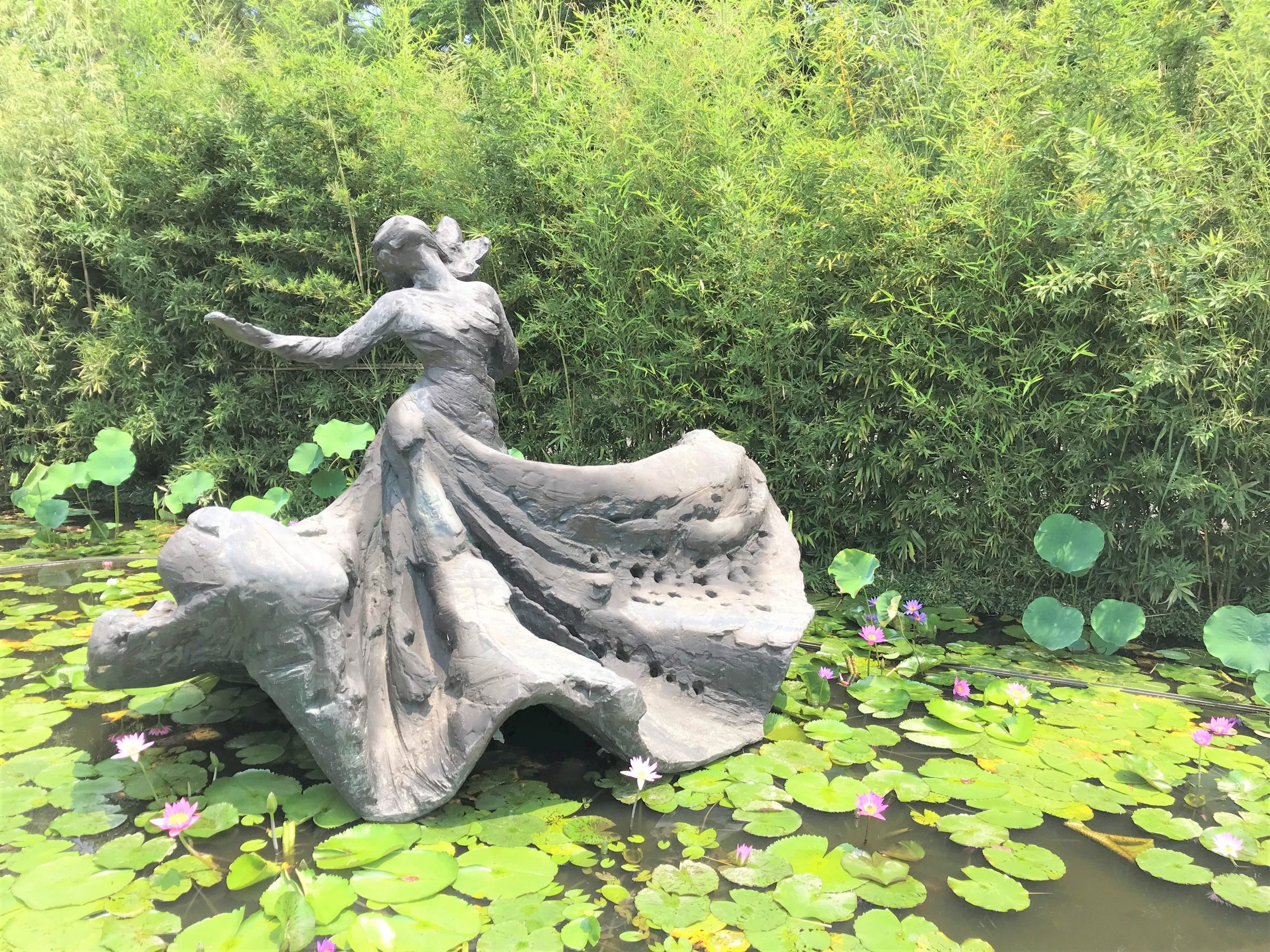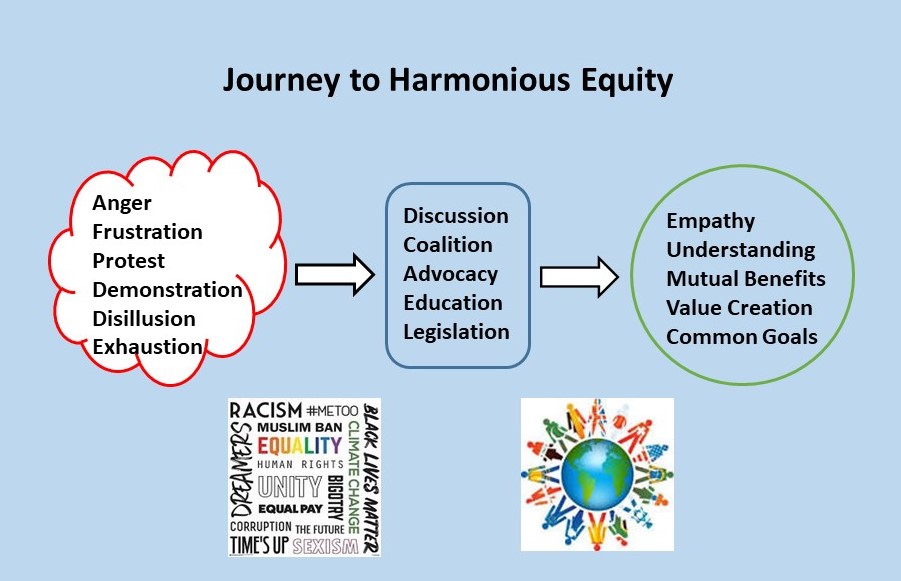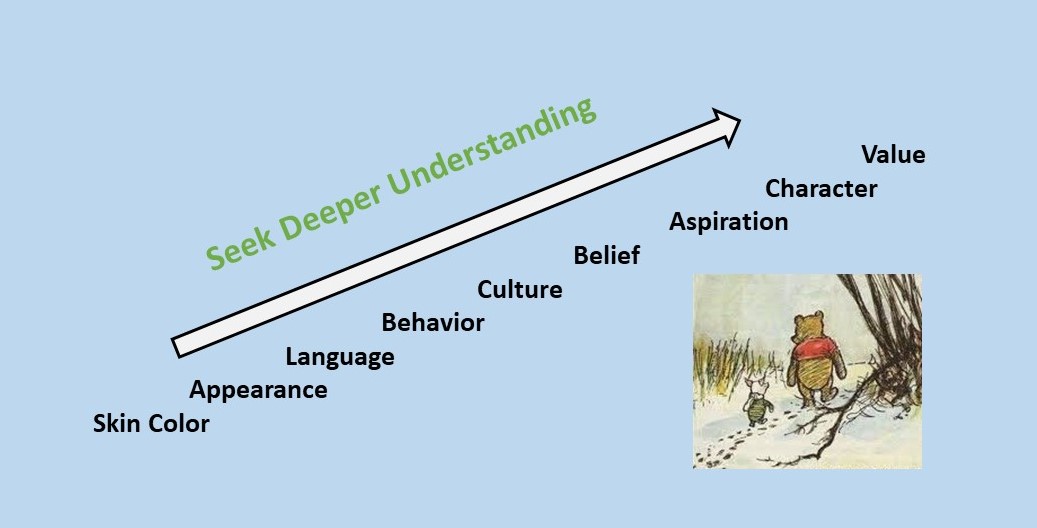
Striving for Equity
– Musings of Dr. Jamie C. Hsu, 8.28.2020
Recently, I participated in an online conference on “Culturally Competent Conversations on Equity and Togetherness.” It was a great opportunity for me to meet many passionate and knowledgeable experts and advocates on these topics. The speakers and participants discussed incidents and consequences of racism, discrimination, and social inequity. There was a strong consensus to take action to eradicate such behaviors and to fight for equity and justice for all.
I was impressed and touched by the many advocates and their programs in the community, government, and corporations, but one thought kept lingering in my mind. Why, after so many decades of demonstrations and protests, are inequality and exclusion still so prevalent in our highly civilized society?
The two accompanying charts are my attempt to provide some broader perspectives for seeking the answer and solutions:
As depicted in the first slide, there are three stages to increasing equity and togetherness. Most time and effort seems to be spent in the first stage of protest and demonstration. If we don’t go beyond that, it can lead to frustration, disillusionment, and exhaustion. Through discussions, education, and legislation, we can move to the next stage of mitigation and calmness. But the ultimate goal of inclusion and equity can only be achieved through empathy, value creation for all stakeholders, and the establishment of common goals and mutual interests.
Most importantly, only through continuous and tireless conversations, and the willingness to put yourself in someone else’s shoes, can we go beyond skin color and cultural stereotypes to truly understand each other as human beings with similar values and aspirations.
In order for any individual to be truly welcomed into a new group, corporation, or community, that person must be able to identify and articulate his/her own talents and unique capabilities. He/she can then use these capabilities to contribute to the team goals and create values for all. Such alignment of contributions and needs will create the “pull,” not the “push,” to have someone included and treated fairly.
I hope this staged approach will move us toward a more harmonious world where everyone can contribute and be treated as a valued member.


力爭平等
-作者 許俊宸博士
-中譯 薛乃綺
最近我參加了一個線上會議,叫做「公平與共容的文化素養對話」。對我來說,這是個很好的機會,可以認識很多對這個議題熱誠且知識淵博的專家、以及擁護者。講師們以及與會者討論了種族主義、歧視和社會不公等的事件和後果。大家有強烈的共識,要採取行動消弭這樣的行為、並且要為所有人爭取平等與正義而奮鬥。
我對於社群、政府和企業中許多倡議者及他們所提出的計畫,感到印象深刻且為之感動;但有個念頭卻一直在我腦海中徘徊不去。經歷了數十年的示威與抗爭,為何不平等在現今高度文明的社會中仍然如此普遍?
隨附的兩個圖表,是我試圖為尋求答案和解決方案所提供更廣闊的視野。
第一章圖所表示的,是將增加平等與團結的過程分成三個階段。大部分的時間和努力,似乎都被放在第一階段的抗議和示威。如果不這樣做,可能會導致沮喪、幻滅和疲憊。透過討論、教育和立法,我們可以進入到下一個緩解且平和的階段。但是,只有透過同理心、為所有利害關係人創造價值、並且建立共同目標和利益,才能實現包容以及公平的最終目的。
最重要的是,只有通過持續不斷且努力不懈地溝通、願意傾聽他人的聲音,我們才能超越膚色和既有文化上的窠臼,而真正彼此理解是具有相同價值觀以及志向的同類人。
為了讓所有新進到群體、組織或社群的人,都能感受到真誠的歡迎;這個人必須能夠辨識而且明白說出自己的才華與獨特的能力。爾後,他/她可以使用這些能量,為團隊目標做出貢獻、為所有人創造價值。這樣的貢獻與需求的延展,會創造出” 拉力”、而不是” 推力”,得以讓人被包容且平等地對待。
希望這種階段式的方法,可以讓我們大家邁向一個更加和諧的世界;每個人都能做出貢獻、並且被視為是重要的成員。


